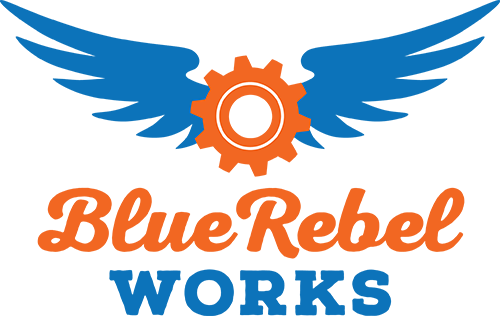There’s one leadership skill that, no matter the management techniques and practices you learn, is needed above all else if you are to truly step into Leadership.
Leadership is not about your title or what you do. It has more to do with the choices you make every day. Making conscious choices to be a leader is a leadership skill we call choosing LeaderSHIFTS.
Over the past 12 years, Blue Rebel Works has become more and more focused on developing courageous, authentic, agile leadership. We teach leadership techniques and have open, deep discussions about living values, building trust, inspiring and developing others, communicating change and more. But no matter the tactic you learn, there is one leadership skill that is the most critical to truly leading yourself, other people, and organizations.
The Most Critical Leadership Skill
Some call it “The Line.” (I love The Conscious Leadership Group’s video on this, and often reference it with clients. Their book on The 15 Commitments of Conscious Leaders is one I refer back to regularly. Roger Connors, Tom Smith and Craig Hickson also use “the line” as a foundation for accountability in The Oz Principle.)
Cy Wakeman calls it a toggle switch. (If you haven’t yet, please do yourself a favour and get her book Reality-Based Leadership!)
Agile practitioners call it the Responsibility Process. (Christopher Avery seems to be the creator of this – he has a great slideshare with key points)
Regardless of what you call it, the most important thing you can do if you want to be a leader is to be intentional and choose a leadership mindset.
In the Blueprint for Workplace Reinvention that Christine McLeod and I developed in 2013, we called this “Individual Leadership.”
I’ll use “the Line” as my point of reference for the two different mindsets, as I find it very simple to understand.
Operating Below the Line – lack of Leadership
When you are ‘below the line,” you are operating in a place of victim-hood, feeling like things are being done “to” you. Scarcity, fear, and blame permeate your thoughts. You’re focused on things you can’t control, feeling stuck.
What you might see or experience when you or others are “below the line:”
- focus on being right
- finger pointing and blame
- ignoring or denying reality
- justifying or rationalizing your behaviour or ideas
When we are below the line, we aren’t able to be creative, to learn, to listen fully, and ultimately, to lead effectively.
Operating “Above the Line” – choosing Leadership
When we are above the line, we are operating from a place of accountability, knowing that no matter the situation, we choose our response and that can change everything. Creativity, curiosity and openness form our way of thinking. We focus on the things we can control and on owning our own actions.
What you might see or experience when you or others are above the line:
- focus on exploring and understanding different options and points of view
- taking responsibility for our role in our circumstances
- accepting change, even if it’s not what we’d planned, as our new reality and focusing on how to be successful within it.
- listening deeply and realizing our way is not the only way
Your circumstances are not the reason you can’t succeed, they are the reality in which you must succeed. – Cy Wakeman
I sometimes have leaders say, “I’m always above the line.” I have to call “BS” on that, because it is neurologically next to impossible. Our brains are built to protect us from danger and keep us alive and safe. Even though we may not be watching out for sabre-toothed tigers in today’s world, our brains see threats to our ego just the same as threats to our physical safety. At a #WorkhumanLive event in 2018, David Rock shared research that found that our brains respond negatively to threats to our Status, Certainty, Autonomy, Relatedness, and Fairness (SCARF). He also explained that our brains scan for these threats every 5 seconds.
Where are you operating most often? Ask yourself:
- How often do you get your back up when someone gives you constructive feedback (affecting your status and autonomy)?
- How often do you get frustrated when someone in a meeting says the same thing you said moments ago, in a slightly different way, and gets praised for it (a threat to your relatedness and fairness)?
- Or how about how you react to change that is being done “to” you (reducing your certainty and autonomy)?
- How often do you feel the fear monster creeping up when you realize you’ve made a mistake or something has gone wrong and you need to tell others (a potential threat to your status, autonomy and relatedness)?
If we can get over ourselves and stop letting our ego guide us, we can lead so much more effectively in today’s uncertain, volatile world.
To make a LeaderSHIFT, we need to:
- Focus on learning versus being right
- Be curious about the future instead of dwelling on the past
- Adjust to ownership of our actions versus victim of others’ actions
- Realize when we’re operating in tension, and consider what our intention is
If we can make LeaderSHIFTS, choosing to approach life and work above the line more often, imagine the impact that can have on our work lives and those of the people we work with?


Recent Comments